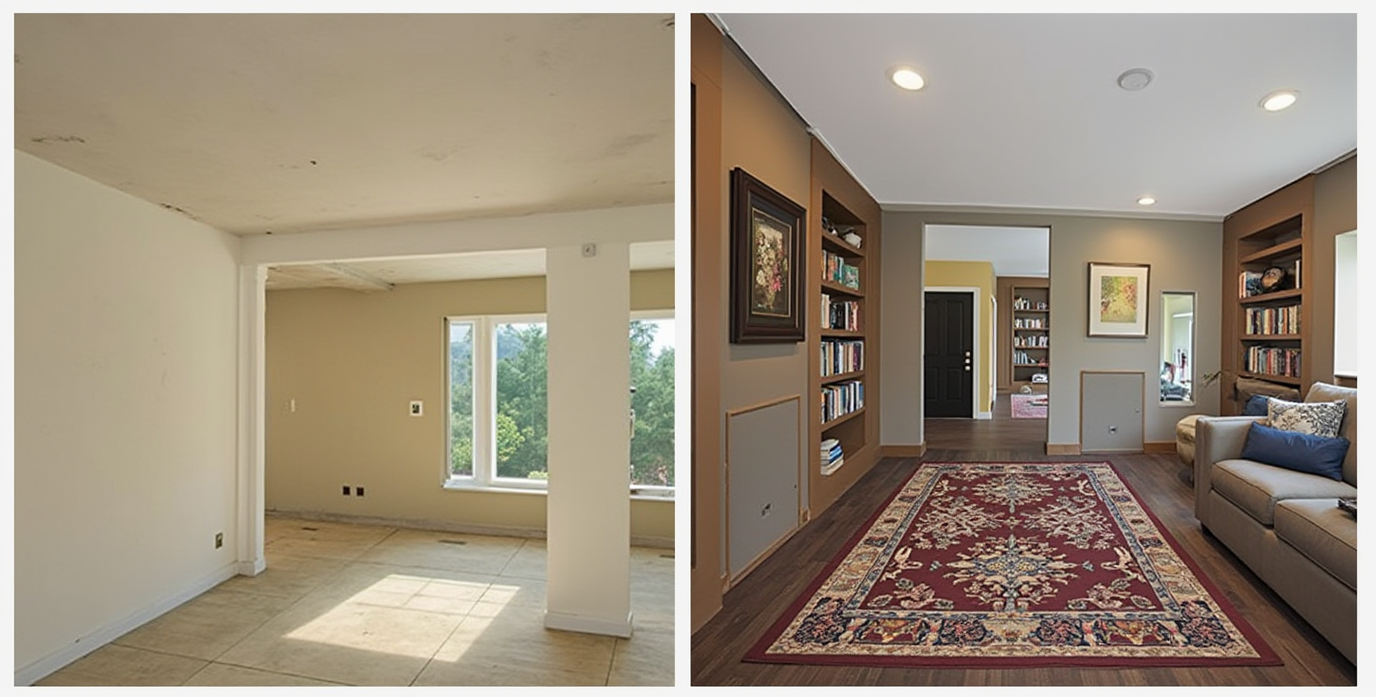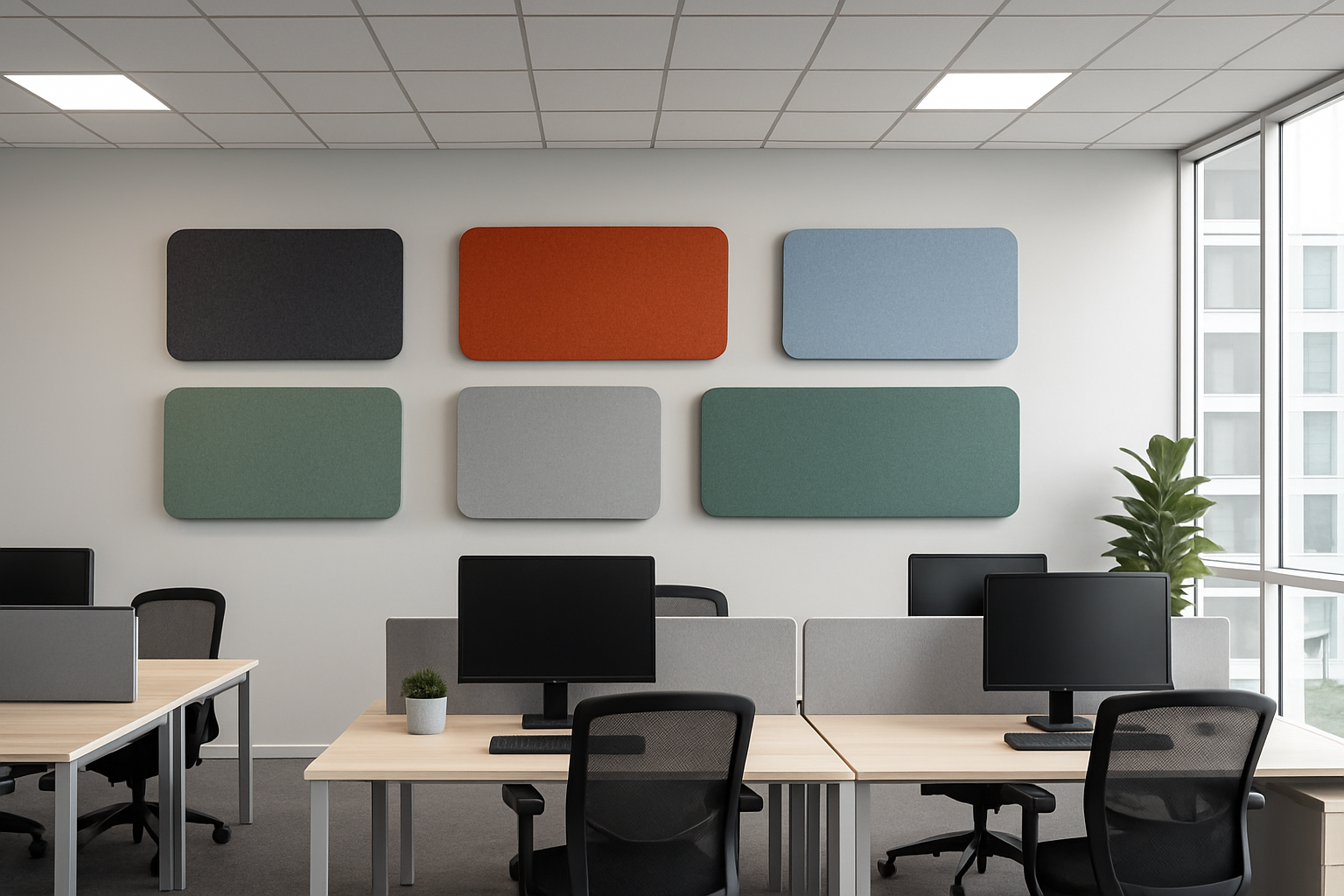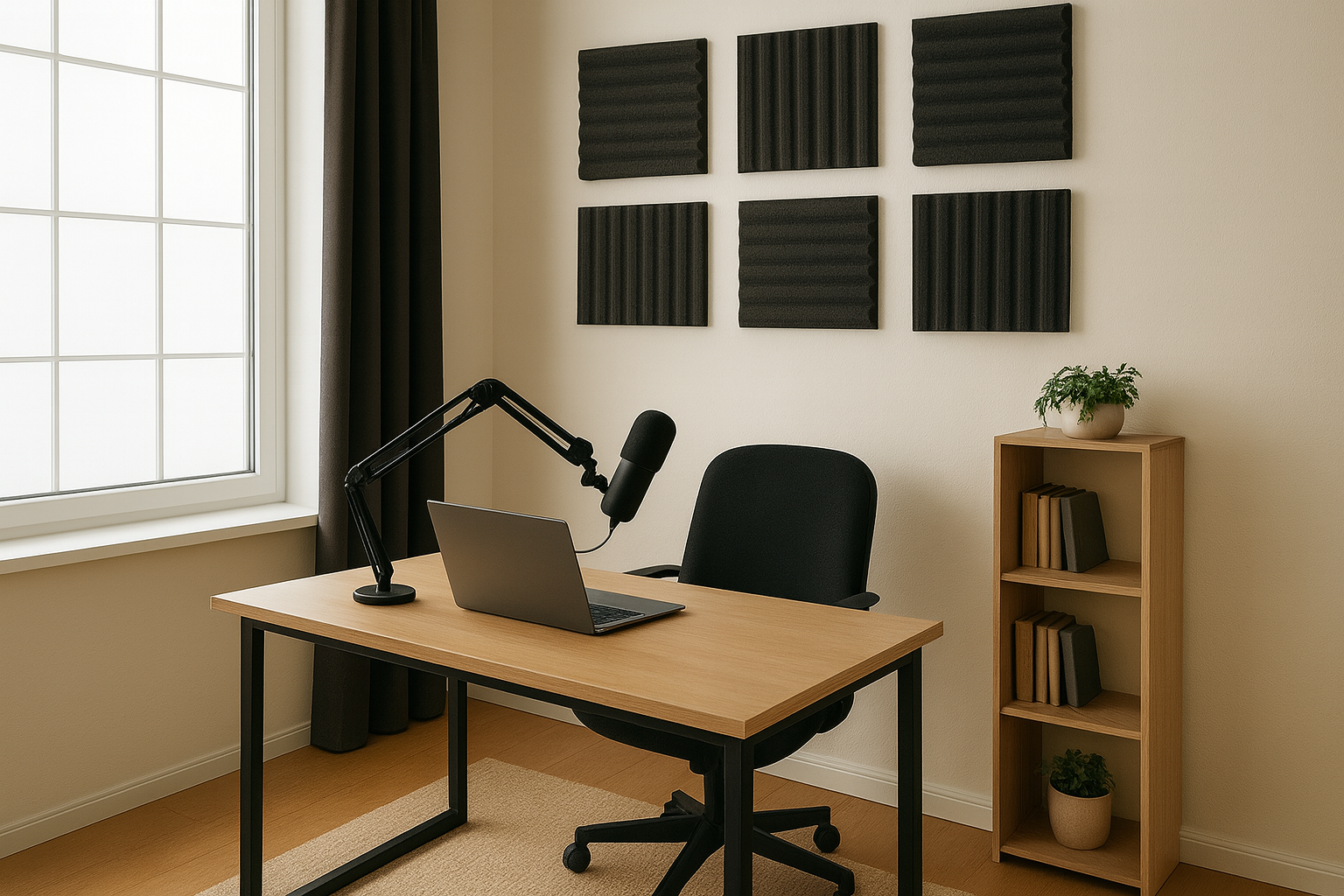Acoustic Treatment Guide for Superior Sound Management
Sound matters in any room. Poor acoustic treatment is usually the reason if your space echoes, feels overly loud, or sounds unclear. Many people mix up acoustic treatment with soundproofing, but they serve different purposes.
Acoustic treatment focuses on how sound behaves inside a room. It’s all about clarity, control, and comfort. Soundproofing does not allow sound in or out. This guide’ll cover the most common acoustic problems, how treatment works, and how to choose the right solutions for your space.
Acoustic Issues
Every space has its own sound issues. In homes, it might be echo in an open living area. Offices often struggle with too much reverb on video calls. In restaurants, excessive background noise makes it hard to talk. These problems aren't always about volume—they usually come from hard, untreated surfaces that reflect sound instead of absorbing it.
Sound bounces off hard surfaces like glass, concrete, or tile in enclosed spaces. Soundwaves continue to reflect without anything to absorb or diffuse it, creating echo, muddiness, or harshness.
To fix the issue, you must first identify where it's happening. Is speech unclear in a certain room? Are bass notes booming in a corner? A walk through your space during a normal day can reveal a lot. The effects of poor acoustics include concentration problems, listener fatigue, and an overall sense of discomfort.
The Science Behind Acoustic Treatment
Sound travels in waves. It can be absorbed, reflected, or diffused when it hits a surface. Acoustic treatment is the art of controlling that reaction.
Absorption removes energy from the wave. It's how you stop echoes or reduce reverb. Materials like fiberglass or acoustic foam are designed for this.
Diffusion spreads sound evenly across a space. It breaks up reflections without deadening the room. This is especially important in music and performance environments.
When unmanaged, reflection creates standing waves, flutter echo, and hot spots. A good acoustic plan balances absorption and diffusion.
Professionals use terms like RT60 (reverb time) and NRC (Noise Reduction Coefficient) to describe performance. These help measure how much sound is absorbed in space and how long sound lingers after it's produced.
You can learn more about the differences between STC and NRC ratings.
Different frequencies behave differently. High frequencies bounce more. Low frequencies (like bass) travel through walls and build up in corners. Effective acoustic treatment addresses the full spectrum, not just one part of it.
Types of Acoustic Treatment Solutions
There's no single product that works for every room, but there are time-tested tools that, when used correctly, solve most acoustic issues. Choosing the right combination of treatments depends on your space, how it's used, and what kind of sound problems you're dealing with.
1. Absorption Panels
These are the most widely used forms of acoustic treatment. Made from materials like fiberglass, mineral wool, or high-density foam, absorption panels reduce echo and reverberation by soaking up sound waves—especially mid- and high-frequency ones. They're commonly installed on walls and ceilings in home theaters, conference rooms, recording studios, and residential living spaces.
Absorption panels come in various shapes, sizes, and finishes. Some are designed to blend in, while others make a visual statement. Customization options allow them to match your décor while delivering high performance.
2. Diffusers
While absorbers remove sound energy, diffusers scatter it. This helps maintain a natural sense of space without creating dead zones. Diffusers are useful in rooms where you want to retain liveliness—like music rehearsal spaces, performance venues, or living areas with open layouts.
They're often installed behind or above listening positions, or on the rear walls of recording studios to keep reflections controlled but balanced. Diffusers can be made of wood, plastic, or hybrid materials, with designs based on mathematical patterns for maximum scattering efficiency.
3. Bass Traps
Low-frequency sound is harder to control. It travels farther and builds up in corners and along wall-to-ceiling intersections. That's where bass traps come in. These panels are designed to absorb deep bass frequencies that standard panels can't handle.
Placed in vertical corners or ceiling junctions, bass traps prevent that "boomy" or "muddy" sound often heard in untreated rooms. They're essential for studios, home theaters, or any space with subwoofers or amplified sound.
4. Ceiling Treatments (Clouds and Baffles)
Sound reflecting off a hard ceiling surface creates harshness and unwanted echo. Acoustic clouds and baffles are suspended overhead to absorb sound before it bounces back down. This is especially helpful in open-plan offices, classrooms, restaurants, and high-ceilinged spaces.
Clouds are typically flat panels mounted horizontally, while baffles hang vertically in rows. Both improve speech intelligibility and reduce overall room noise. They also double as modern design features when chosen with the right finish and layout.
5. Portable Acoustic Solutions
Portable acoustic panels and freestanding screens are ideal for temporary setups or multipurpose rooms. They can be moved, reconfigured, or stored away when not in use.
They are popular in coworking spaces, video shoots, or in homes where fixed equipment is not available. Despite their mobility, they still provide high absorption efficiency.
Acoustic Treatment for Specific Rooms
The way you treat a space depends on how you use it.
The goal of home theaters is immersion, so you want to absorb reflections while maintaining balanced sound. Wall panels, ceiling clouds, and bass traps work together here.
Home offices and Zoom rooms benefit from acoustic panels that reduce reverb and improve speech clarity. This makes video calls clearer and reduces background noise during meetings.
Recording studios need precise control. Every surface matters—from wall panels to corner traps to diffusers behind the mixing position.
Sound travels easily in open-concept homes. Acoustic panels and ceiling treatments can help contain and soften sound, especially in areas with many hard surfaces.
The goal for restaurants and public venues is to control ambient noise without killing the atmosphere. Acoustic ceiling clouds and discreet wall panels can reduce overall volume and improve conversation.
DIY vs. Professional Acoustic Treatment
Not every space needs a full custom install. Some acoustic treatments can be done independently—especially for basic sound issues. Hanging absorption panels, placing rugs, adding bookshelves, or using foam tiles can reduce echo and make small rooms more comfortable.
DIY is often effective for home offices, small bedrooms, or beginner music setups. But there are limits. Without the right tools, it's hard to measure acoustic performance accurately. Poor placement or the wrong materials can actually make the problem worse—or do nothing at all.
Professional treatment becomes necessary when precision matters. Whether you're working in a recording environment, a restaurant, or a client-facing space, performance and aesthetics matter. That's where our team at New York Soundproofing comes in. We assess the room, identify problem zones, and build a solution that works—and looks right.
As for cost, DIY can seem cheaper upfront, but rework and trial-and-error often add up. Professional treatment is a one-time investment with measurable results. We'll help you prioritize what's needed and what can wait—based on your space, goals, and budget.
Materials Used in Effective Acoustic Treatment
The material behind the panel matters as much as the panel itself. Most high-performance acoustic treatment systems use fiberglass or mineral wool as the core. These materials have high density and great absorption across a wide frequency range.
Foam-based acoustic materials are popular in do-it-yourself systems. They have the advantage of being easy to install, but do not handle low frequency sounds well. Therefore, it is better to use them to handle high and medium reflections, rather than to control the entire spectrum.
Panels made from recycled PET, natural fibers such as hemp or cotton, and biodegradable acoustic boards are also popular.
The fabric that covers the panel matters, too. It must be acoustically transparent, allowing sound to pass through and reach the core material. The right fabric won't block absorption and can match your interior.
Lastly, innovative new materials are entering the market—from felted wood slats to 3D acoustic tiles with both form and function. At New York Soundproofing, we stay up to date with the latest solutions so we can match the right material to your needs.
Good sound doesn't just happen—it's designed. Acoustic treatment makes all the difference, whether you're creating a focused workspace, a high-performance studio, or simply trying to enjoy a conversation without echo.
Treating your space isn't just about fixing a problem—it's about improving your daily living and work.
If you're ready to improve the sound in your home, business, or creative space, reach out to New York Soundproofing. We offer personalized consultations and tailored solutions that fit your goals and space.



